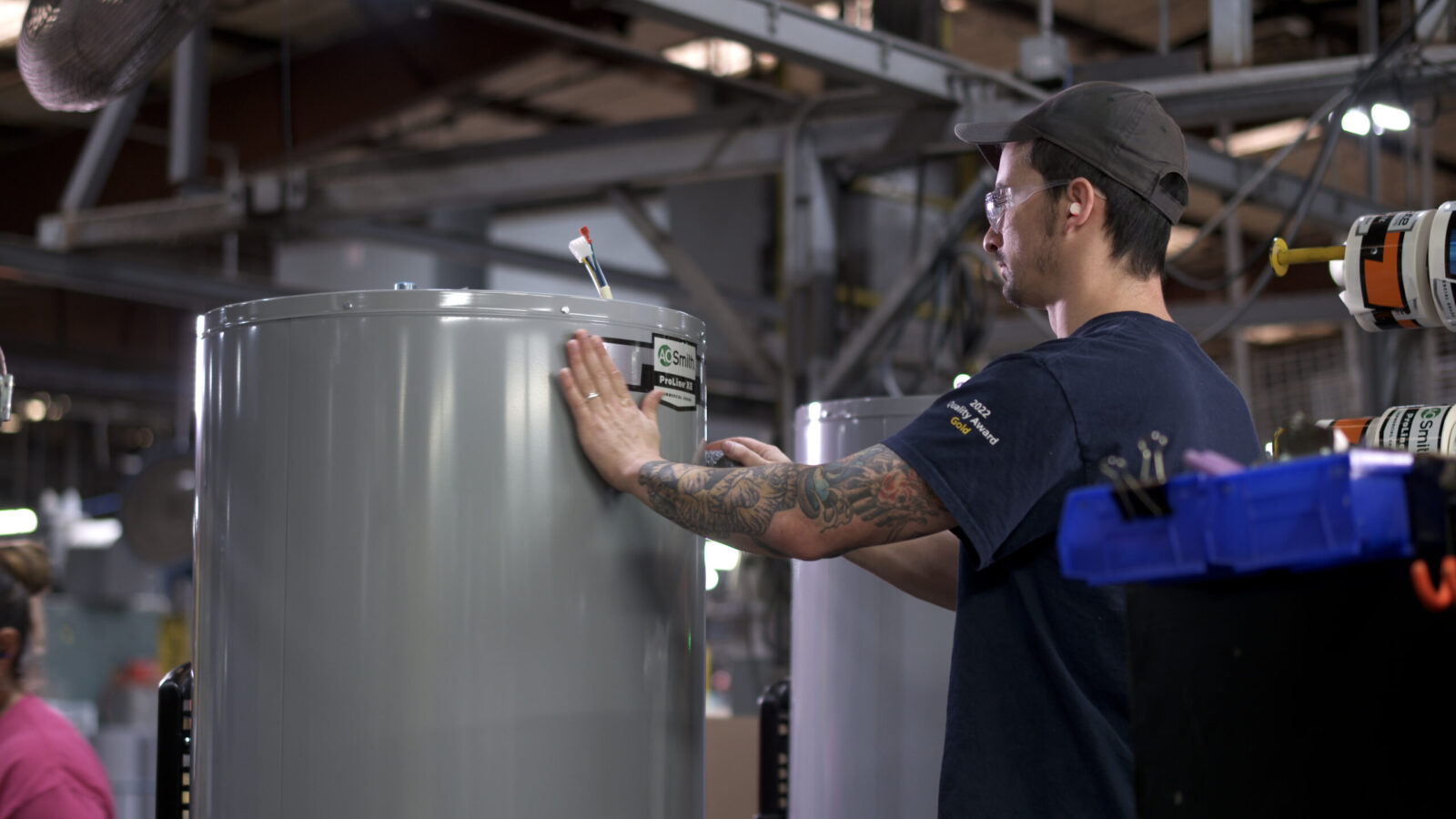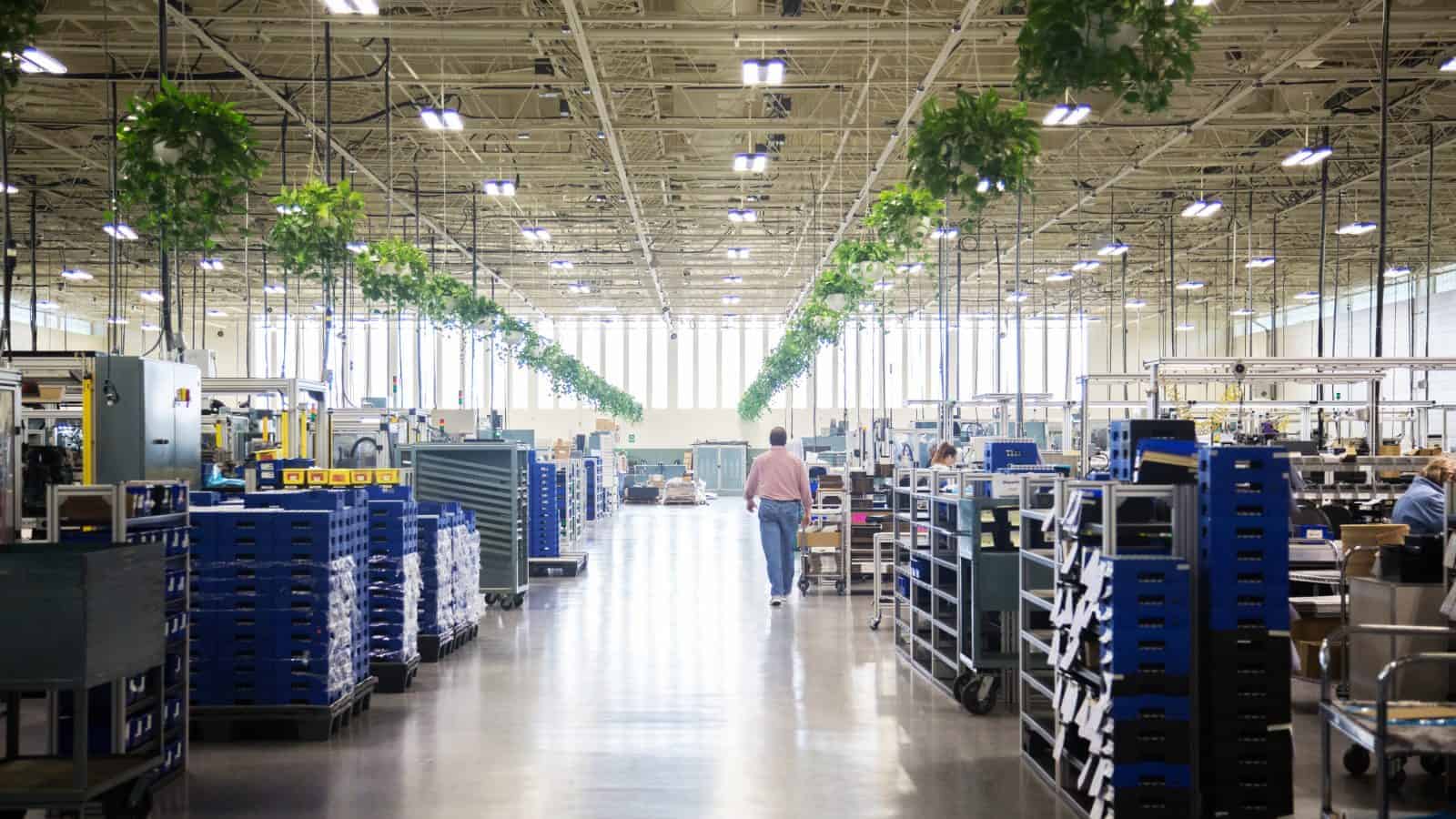AO Smith’s Water Heaters Drive Building Efficiency

At AO Smith, the name of the game is efficiency. Though the company produces an array of water heaters, boilers, storage tanks and water treatment and filtration equipment, one goal is the same for every product: It should do more with less. This is especially true for hydronic and water heating appliances as these are energy intensive.
“On average, water heating loads are 25–30% of a home or building’s carbon profile,” said AO Smith Corporate Vice President of Government, Regulatory and Industry Affairs Joshua Greene.
- “After space heating and cooling, water heating is the next largest energy load in a home or commercial building. If you’re concerned about your energy spend, using heat pump technology is the most efficient way in which to reduce the overall spend on those heating loads.”
Efficiency in action: Recently, one of the Milwaukee, Wisconsin–based company’s water heating products—the CHP-120 fully integrated heat pump water heater—was installed in a Hilton property in New Haven, Connecticut, the all-electric Hotel Marcel, which opened in 2022 in the former headquarters of the Armstrong Rubber Company. Unlike conventional water heaters, which generate heat directly, heat pumps use electricity to move heat around.
- Hotel Marcel is the sole U.S. hotel to earn the U.S. Green Building Council’s Leadership in Energy and Environmental Design Platinum status in a decade.
The differentiator: The CHP-120 is the only unitary (one-piece) commercial heat pump water heater on the market. Comparable items use a split system in which one part, the compressor, sits outside of the building.
- The design enables Hotel Marcel and other customers to put the entire unit inside in a single room and “get the benefit of taking moisture out of the air in that room, then get to use the hot water that’s in the tank afterward, for laundry and other uses,” Greene told us.
- “So, it’s essentially free hot water—and you’re bringing down the ambient air temperature and humidity, which helps offset energy that would have been needed to cool that area.”
Gaining popularity: Current heat pump water heater customers are mostly residential homeowners, but in the commercial market, the technology has been growing at a rapid pace, Greene continued, because the energy savings “go straight to companies’ bottom line.”
- “Many states now offer rebates to help offset the higher upfront costs of the technology. As a result, we’re starting to install commercial heat pump water heaters in restaurants, schools, [more] hotels, multifamily housing” and more.
- A single CHP-120 installed in an apartment building, for example, can support several apartments depending upon on-site conditions, Greene said.
Overcoming barriers: Of the millions of water heaters (gas and electric) sold each year by manufacturers in the U.S., fewer than 3% are heat pump water heaters, Greene said. The main reason: price.
- “The average all-in project cost of a heat pump water heater is from $3,000 to $6,000” in the residential market, he went on. From a residential standpoint, “the average all-in cost of a 45-gallon gas or electric unit is about $800. It’s that cost delta that’s been the main impediment—but they’re 300 to 400 times more efficient, so one will save you 70% on your bill every month.”
- In the commercial market, heat pump water heating project costs are much higher due to size and other variables, but the energy savings can be exponentially larger, Greene added.
Regulation changes: With state and federal regulations and rebates, incentivizing high-efficiency technologies, heat pump water heater adoption—which is already on the uptick—will likely rise in many states in the coming years, according to Greene.
- “Now with robust federal tax credits and home energy rebates, coupled with utility rebates, they’re slicing that $3,000 to $6,000 [price tag] in half, and in places like California, you can get 80% or more of the cost covered.”
- AO Smith expects to stay busy, Greene said with a laugh.
Coming up: What’s next for a company that, in its 150-year history, has been at least three different businesses—having gone from automotive-frame maker to energy sector steel product manufacturer to leading global water technology company?
- “You can certainly expect to see continued innovation,” said Greene. “Our company has transformed a few times over the past century, and we will continue to evolve, with a focus on water technology, while adhering to the guiding principles and values that the Smith family established 150 years ago.”
